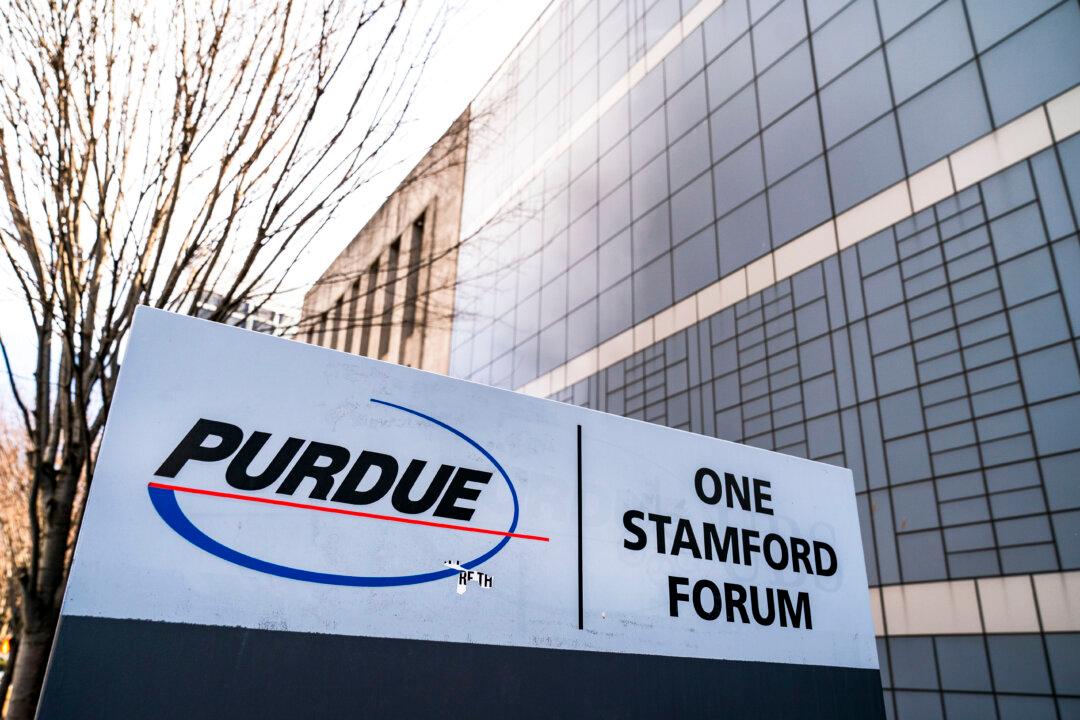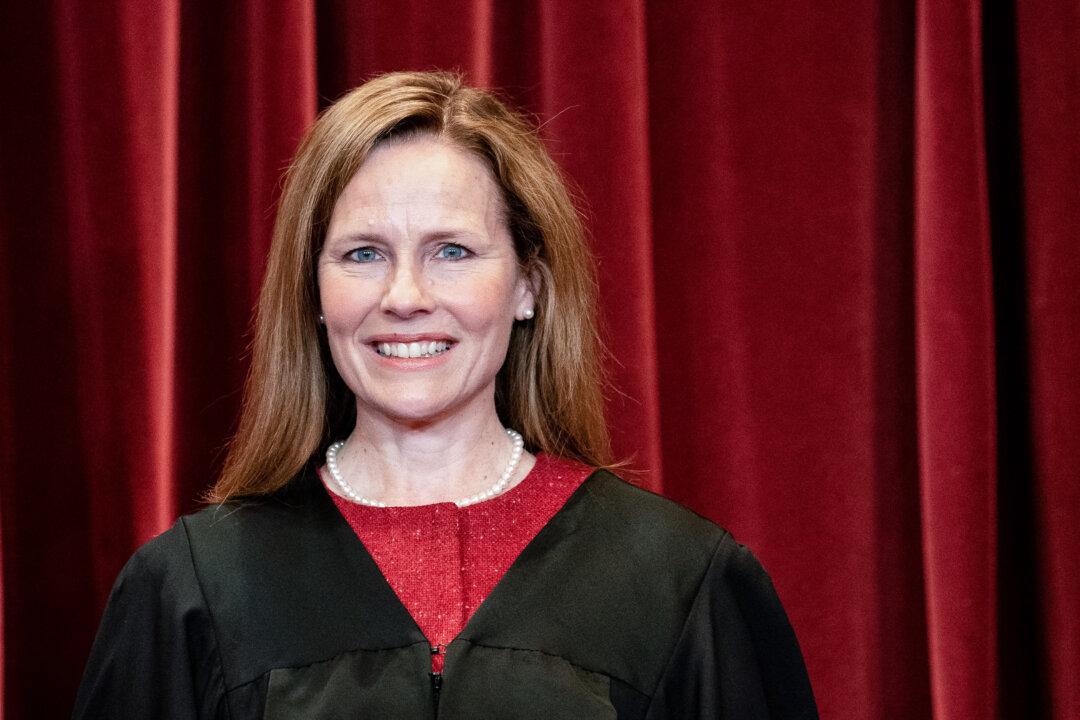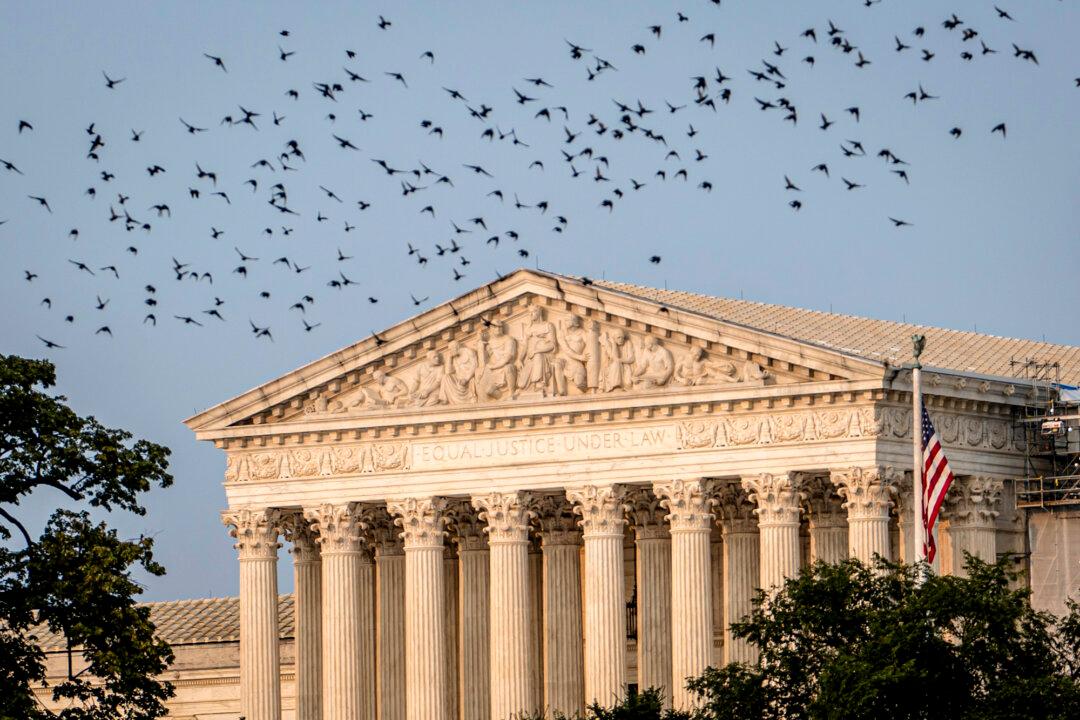The Supreme Court ruled 5–4 on June 27 that U.S. bankruptcy law does not allow courts to approve an opioid manufacturer’s bankruptcy settlement that extinguishes the claims of those alleging they were harmed by opioid use.
The case is Harrington v. Purdue Pharma LP.
Dissenting were Chief Justice John Roberts and Justices Brett Kavanaugh, Sonia Sotomayor, and Elena Kagan.
Purdue Pharma, based in Stamford, Connecticut, is accused of playing a major role in fueling the ongoing opioid crisis. The company is said to have engaged in irresponsible marketing practices that contributed to the rise of opioid abuse in the United States.
The company makes oxycodone, marketed as OxyContin and by other names, which is a semi-synthetic narcotic analgesic that serves as a popular painkiller.
The company also has been criminally prosecuted in connection with opioids.
Purdue ran into financial trouble, and when it initiated its bankruptcy proceeding in 2019, members of the Sackler family who founded the company agreed to contribute about $6 billion to settle future opioid-related lawsuits in exchange for a release from liability in future lawsuits.
The total payout to opioid victims, hospitals, and states is expected to exceed that amount, and the reorganized company will focus on dealing with opioid abuse.
The Sacklers themselves, who deny wrongdoing, didn’t file for bankruptcy. They haven’t been involved in the company’s affairs since 2019.
Forbes magazine listed the Sacklers in 2016 as the 19th wealthiest family in the United States, with an estimated net worth of $13 billion.
The Biden administration objected to the release signed by the Sacklers, which it characterized as an abuse of the bankruptcy system.
The release “extinguishes the claims of all opioid claimants except the United States, and therefore applies to an untold number of claimants who did not specifically consent to the release’s terms,” the government said.
During the oral argument on Dec. 4, 2023, U.S. Deputy Solicitor General Curtis Gannon suggested that the Sackler family was getting off too easy.
The U.S. Court of Appeals for the Second Circuit approved a Chapter 11 reorganization plan for the company that will release claims the company’s creditors have against nondebtors such as the Sacklers, Mr. Gannon told the justices.
Members of the family extracted about $11 billion from the company in the 11 years before it filed a bankruptcy petition, according to the government.
The Second Circuit “found authority for that release in a catchall provision of Chapter 11 ... but this release goes beyond what the statute authorizes ... and it also conflicts with the basic nuts and bolts of the Bankruptcy Code’s comprehensive scheme.”
The release allows “the Sacklers to decide how much they’re going to contribute,” Mr. Gannon said.
“It grants the Sacklers the functional equivalent of a discharge, what they might get if they themselves were in bankruptcy, though even such a discharge would not extend as this one does to claims involving fraud and willful misconduct,” he said.
Majority Opinion
In the majority opinion, Justice Gorsuch wrote that the company claimed that OxyContin, unlike traditionally addictive opioids, had a novel “time-release” formula that greatly reduced the risk of addiction.This allowed the company to promote its use in “a much broader range of applications,” and in time, OxyContin became “the most prescribed brand-name narcotic medication” in the nation, he wrote.
The opioid epidemic led to the deaths of about 247,000 people in the United States between 1999 and 2019 and, according to federal health officials, cost the country between $53 billion and $72 billion annually.
“Purdue Pharma sits at the center of that crisis,” he wrote.
Justice Gorsuch wrote that the discharge proposed by the Sacklers sought to void current opioid-related claims against the family, as well as future claims.
It sought to ban not just claims by creditors in the bankruptcy proceeding, but also claims “by anyone who might otherwise sue Purdue.” It also sought to eliminate claims for negligence, fraud, and willful misconduct and “to end all these lawsuits without the consent of the opioid victims who brought them,” he wrote.
Nothing in the law suggests that the claims of opioid victims “can be bargained away without the consent of those affected, as if the claims were somehow Purdue’s own property,” Justice Gorsuch wrote.
The Supreme Court held in the case that the Bankruptcy Code does not authorize a release that, as part of a Chapter 11 reorganization plan, would discharge the claims of people not involved in the bankruptcy without their consent.
The court reversed the judgment of the Second Circuit and returned the case to that court “for further proceedings consistent with this opinion.”
Justice Kavanaugh wrote a dissenting opinion that was joined by Chief Justice Roberts and Justices Sotomayor and Kagan.
The majority opinion is “wrong on the law and devastating for more than 100,000 opioid victims and their families,” Justice Kavanaugh wrote.
The decision “rewrites” the Bankruptcy Code and restricts the time-honored authority of bankruptcy courts to develop “fair and equitable relief for mass-tort victims” and deprives victims of money they fought for and secured after years of litigation, he wrote.
The court’s apparent belief that the Sacklers’ $6 billion “was not enough” should have led “at most” to a decision to send the case back to a lower court to determine whether the release was appropriate under the law, he wrote.
“But instead the Court responds with the dramatic step of repudiating the plan and eliminating non-debtor releases altogether” and in doing so “jettisons a ... critically important tool that bankruptcy courts have long used ... to handle mass-tort bankruptcies.”
The court’s move is “entirely counterproductive, and simply inflicts still more injury on the opioid victims,” Justice Kavanaugh wrote.







